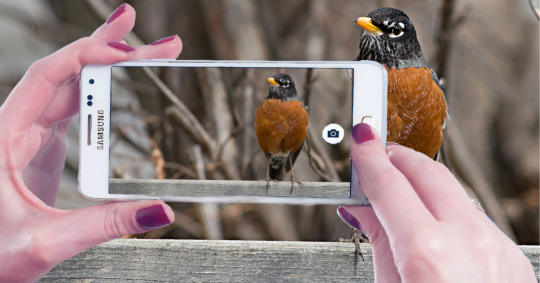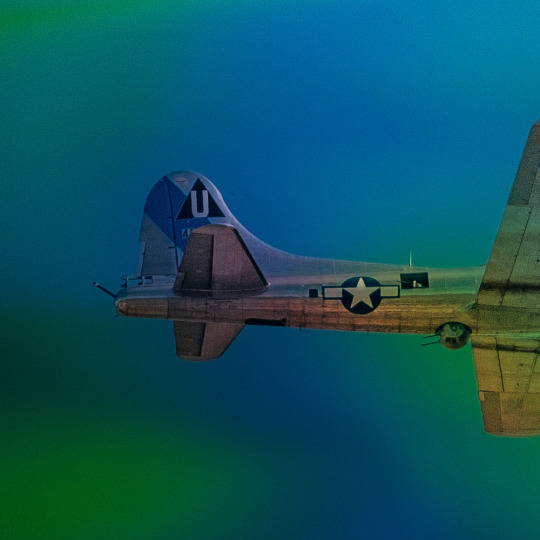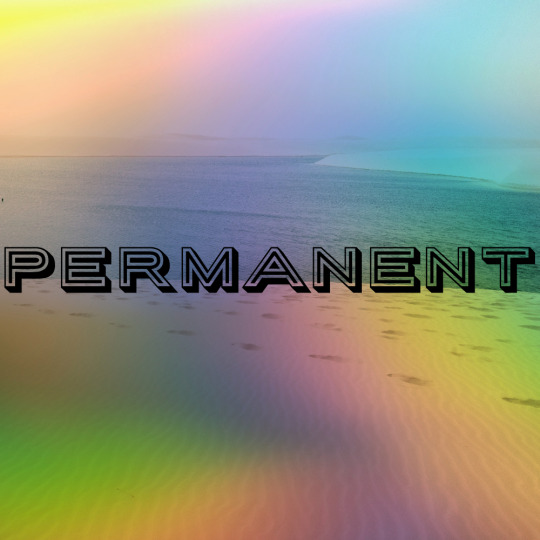#birdwatching guides
Explore tagged Tumblr posts
Text
A Symphony of Songbirds: Audubon Day Launches City Nature Challenge
Spring is in the air, and on April 26, 2024, nature enthusiasts and bird lovers alike will have their binoculars and smartphones ready for Audubon Day – a celebration that spreads the wings of opportunity to enjoy the beauty of birds and wildlife. This year, Audubon Day coincides with the kick-off of the 2024 City Nature Challenge, a four-day blitz to discover the diverse wildlife that calls the…

View On WordPress
#April 26#artistic legacy#Audubon Day#Audubon Day events#Audubon&039;s birthday#Audubon&039;s contributions#Audubon&039;s impact#Audubon&039;s insights#Audubon&039;s teachings#avian diversity#binoculars#biodiversity#biodiversity documentation#bird calls#bird conservation#bird identification#bird lovers#bird migration#bird migration patterns#bird songs#bird species#bird species identification#birding adventures#birding community#birdwatching#birdwatching community#birdwatching guides#birdwatching locations#birdwatching tips#celebration
0 notes
Text

I have THE biggest, BEST news EVER--
I GOT A BOOK CONTRACT!!!!!!!!
I am exceptionally pleased to announce that I have just signed a contract with Ten Speed Press (a division of Penguin Random House) to publish...
The Everyday Naturalist: How to Identify Animals, Plants, and Fungi Wherever You Go!
It is slated for publication in early Summer 2025, and will be written for anyone who wants to be able to identify the living beings around them regardless of educational level or experience. A HUGE thank you to my literary agent Jane Dystel of Dystel, Goderich & Bourret LLC, and my editor at Ten Speed Press, Julie Bennett!
This isn't just another field guide--it's a how-to book on nature identification that helps you go from "I have no idea what this animal/plant/fungus is and I don't know where to start" to "Aha! I know how to figure out what species I'm looking at/hearing!" Those familiar with my nature ID classes know that I emphasize skills and tools accessible to everyday people. Whether you're birdwatching, foraging, or just enjoying the nature around you, my goal is to help you be more confident in figuring out what living beings you encounter wherever you go--and not just in the Pacific Northwest.
The Everyday Naturalist will not only explain what traits you need to pay attention to like color, size, shape, location, etc. and how to use them to differentiate among similar species, but will also detail how and when to use tools like apps, field guides, and more. (And given the current kerfuffle about A I generated foraging books, I will of course include information on how to determine the veracity of a given book or other resource.) And my editor and I have already been discussing some great additions to the book that will make it even more user-friendly!
Are you excited about this? I certainly am! I wanted to wait until the pixels were dry on the contract before going public with this (though my newsletter subscribers got to hear about it last month, lucky them!) It still doesn't feel real, but I'm already working on the manuscript so it'll sink in soon enough.
I will, of course, keep you all apprised of my progress because this project is going to be a big part of my life over the next several months as I write and edit and write and edit and wash, rinse, repeat. So keep your eyes on this space for updates (and feel free to add yourself to my monthly email newsletter here, too!)
#nature#nature identification#animals#plants#fungi#field guide#mushrooms#foraging#birding#birdwatching#scicomm#science communication#books#nonfiction books#publishing#wildlife#science#biology#botany#mycology
989 notes
·
View notes
Text
I am craving joy rn so birdwatchers!! What is the story of your spark bird? (A spark bird is the bird that sparked your love for birds/birdwatching)
I’ll go first! I walked my dog one day with the Merlin app in hand, ready for my first time bird watching. The first bird I spotted was a raven? crow? A black blob in the sky and I was like :/ this is what birdwatching is all about??? But then I stumbled upon this huge bush with so much loud chirping, and while I couldn’t see the birds, I sure could hear them. So I turned the sound identifier on and it gave me the name of the house sparrow. House sparrows are extremely common in my neighbourhood and I had seen and heard the little fellas daily, but this was the first time I ever paid attention to them instead of letting them fade into the background. I squatted down to try and peer into the thicket of the bush and saw so many house sparrows! They were hopping around and so very alive that I just couldn’t stop watching them. Eventually I did have to go (my dog is very impatient), but wow, it was a life altering event truly. And it all happened with one of the most common birds in an innocuous park. Anyway, birds are beautiful and so is life <3
#did i write this because I just bought *another* bird guide…maybe…#birds#bird#birblr#birdwatching#birding#nature
24 notes
·
View notes
Text









Some scenes from my walk this afternoon. It was very nice to get out and see some wildlife now that the snow has melted a lot.
#rusty angel#canada goose#hawk#landscape photography#wooden frog#swans in flight#let love be your guide#red winged blackbird#american robin#snow#wild animals#wildlife pictures#wildlife photography#nature#birds of tumblr#animal photography#wild birds#birds of north america#birdwatching#aurora#ontario#Nokiidaa Trail
9 notes
·
View notes
Text
one minute sheee wasn't there and then the next minute there she was!
#listening to a beginner's guide to birdwatching by haley blais is making me feel warm and hopeful#rambling
7 notes
·
View notes
Text

How the Bird Goetia find dates.
7 notes
·
View notes
Text
I'm about to put my entire heart and soul into birdwatching bc I got my grandpa's birdwatching stuff when he died I'm gonna fucking cry
#birdwatching#birds#i even got my great grandpas field guide#birder#amateur birdwatcher#wild birds#family
4 notes
·
View notes
Text
i find it very funny how clouds can have dual names like they're organisms. the noble cirrus uncinus. the enigmatic cumulus congestus. all of these fascinating species and more at my Cloud Zoo
#melonposting#meteorology is very funny sometimes#i wonder if meteorologists have fun identifying clouds. like ahh those look like altocumulus but i think they're lower in the atmosphere#are there cloudwatching guides like there are birdwatching guides? :)
3 notes
·
View notes
Text
In good news, excellent even, I finally saw a long tailed tit today! I've wanted to see this bird for so long and it was in a tree outside my house this morning!!
#i may also be vonsidering joining a birdwatching group#i need to find a local one first tho#but i keep binoculars by my window at all times#and when i see a new bird i find it in my bird guide book and write down where i saw it#so like im part way there
2 notes
·
View notes
Text
ONE MINUTE SHE WASN'T THERE AND THEN THE NEXT MINUTE THERE SHE WAS
ONE MINUTE SHE WASN'T THERE AND THEN THE NEXT MINUTE THERE SHE WAS
ONE MINUTR SHE WASNT THRRE AND THEN THE NEXT MINUTE THERE SHE WAS!!!
#haley blais#congratulations you have altered my brain chemistry#beginner's guide to birdwatching#wisecrack
13 notes
·
View notes
Text

Guess who's got two thumbs AND a special use permit to give guided nature tours at Willapa National Wildlife Refuge in Long Beach, WA?
Yep, that'd be me! I am SUPER psyched about this; even though I love all the public lands in the Columbia-Pacific region, I have a particularly close relationship with the Refuge and its many varied habitats. So landing a permit to give tours there is a HUGE feather in my cap!
To celebrate, I've added a scheduled group tour that anyone can register for at the Porter Point Loop Trail on the evening of Thursday, July 13. You can register for that and my other scheduled tours on my EventBrite page at https://www.eventbrite.com/o/rebecca-lexa-naturalist-66370291503. I'm also available for booking for private guided tours; more information can be found at HireaNaturalist.com.
#Willapa National Wildlife Refuge#Washington#Long beach Washington#Pacific Northwest#PNW#hiking#hikes#tours#guided tours#nature#outdoors#outdoor recreation#birding#birdwatching#forests#wetlands#ecology#wildlife
40 notes
·
View notes
Text
haley blais’ new album is so good
2 notes
·
View notes
Text









Listen to the sand Listen to the ground There's always gonna be another way out I am your shade in the morning You are my shadow at dusk And the music our footprints write is permanent More permanent than sound Seeming - Permanent [The Birdwatcher's Guide To Atrocity]
#seeming#permanent#the birdwatcher's guide to atrocity#alex reed#alexander reed#s. alexander reed#aaron fuleki
3 notes
·
View notes
Text
Bird/Parrot tumblr help me out
Just came home a few hours ago and there was a small parrot muking about on the sidewalk of my complex then flying up to the trees with the passerines and finches.
I'm not a parrot-person. My immediate thought was "it's a pet" and I tried to coax it a little closer. If it is a pet it's wings definitely haven't been clipped since this lil fella flew back up several trees at different parts of the complex and then flew down and flapped in place in front of me to intimidate (I think that's what it was doing) when it thought I was getting to close. I left it be. I once brought a heat-stroke suffering bird into my apartment cuz I thought it was an escaped canary that I didn't want getting hunted by a cat. I don't want to bring an angry parrot into my apartment.
Parrots are definitely not native to northern Bay-area California, right? Even if this little guy seemed to be doing alright and could fly like no one's business I'm just worried about him. He's out here all alone. Pet or not he could get hurt. Also what if it's too cold for him?
The parrot was all yellow-orange in the face and head with a light colored beak, green on it's wing feathers and I swear it had blue on the end of it's tail. Lil dazzler but still again feels like something I'd see in a pet store. Here's the best pictures I could find of what I think I saw




Wikipedia tells me these are pics of Sun Conures, Jandaya Parakeet, Olive-Headed Lorikeet and a Fischer's Lovebird respectively. I don't think it's the last one since this bird definitely had a longer tail like you'd see on a parakeet but I know it had a lighter beak too.
I hope it's okay. I hope it knows what it's doing.
#bird tumblr#parakeet#birblr#birbs of tumblr#parrots#identification guide#feral#feral bird#lorikeet#bird watching#birdwatching#birdlovers
0 notes
Text
Ough birdwatchers guide to atrocity is literally still so good
I love the song progression the most.
"the fates" as the Opening statement. Atrocity is imminent. There's nothing you can do to stop it. So how do you cope?
You "Go Small". With the fast and steady backing drum beat to accentuate that even though fate is coming; so are you.
The ego-favorable perspective is emphasized in "Someday Lily". Remove yourself further from the world, the atrocities around you. If they want to see you dead you gotta keep living. But remember there's kindness, most of all within you.
For without kindness - "The Flood Comes For You". And god I love the anger in this song. It's a contrast to Someday Lily but in the way that it's the other side to the same coin.
'I will gladly gladly drown' says the flood, but the response of the next song is clear – "Remember To Breathe". You won't be the one to single handedly end the world in one fell swoop. You're in this for the long haul. Through the pins and needles of the mundane.
And after that last breath is taken we get right back to the entropical hubris of "End Studies"!! Top 3 songs of the album imo. It's even more proactive than "The Flood Comes For You" in its strive for an End.
And as it fizzles out we get to "Permanent". The only thing that's permanent is irrevocable change. Loss. Destruction. BUT it also clearly states there's always another way out. And we can leverage these.
the way "Permanent" ends with 'No need to be good now' to lead into "Reality is afraid" is so beautiful to me. It's such a triumphant song. Declaring that yes, you are powerful, even after everything that has happened to you. Every atrocity. Every death. You're still here. And you can shape reality as you like. Fuck what everyone else is saying. I care about me and my and I can manifest that care even if reality would deem it ridiculous.
This, taken to the extreme leads us to the conclusion that is "Learn to Vanish". Listing a bunch of "[verb] a [noun]" groups to illustrate just what it is we fill our lives with. But there's absolutely no connective tissue between them. It feels unreal. As if those things never really happened. It closes with the Titular "learn to Vanish" as the last action one has supposedly done. And after vanishing - you gotta celebrate
"Celebration Song" is the album's closer. And goes on a tour from outside reality, where you're powerful enough to bring back life from extinction, to a forceful reintegration to reality. But this isn't framed as damnation. You're still powerful. You have control over yourself.
And the birds will still fly.
So come on, won't you celebrate with me?
#jaam talks#seeming#birdwatcher's guide to atrocity#seeming music#slow work day#trying my damndest to be happy about celebration song actually#me @ myself in the mirror: “You're powerful. Reality is afraid of you. Go kill the sun NOW.”#“you can escape and be free. you can get away with it all. in fact you're already doing it.#“love is out there for you.” and if YOU don't think that then i will love you. come here.
1 note
·
View note
Text
Discover the Magic of Gulf Savannah Way Tours: a Journey Through Australia's Hidden Gem
Embarking on a Gulf Savannah Way tour is like stepping into a world where nature and history intertwine to create an unforgettable adventure. This iconic route, stretching from Cairns to Broome, offers a unique glimpse into Australia’s rugged beauty and rich cultural heritage. Whether you’re an active retiree, a couple over 40, or a business professional seeking a break from the hustle and…
#Adventure Travel Over 40#Australian Heritage Sites#Australian Nature Tours#Australian Outback Adventures#Australian Road Trips#Australian Sacred Sites#Birdwatching Tours Australia#Cairns to Broome#Eco-Tourism Australia#Fishing Spots in Australia#Guided Tours Australia#Gulf Savannah Way Tours#Hiking Trails Australia#Indigenous Cultural Tours Australia#Mature Travelers Tours#National Parks Australia#Outdoor Activities Australia#Remote Australia Travel#Unique Australian Landscapes#Wildlife Watching Australia
0 notes